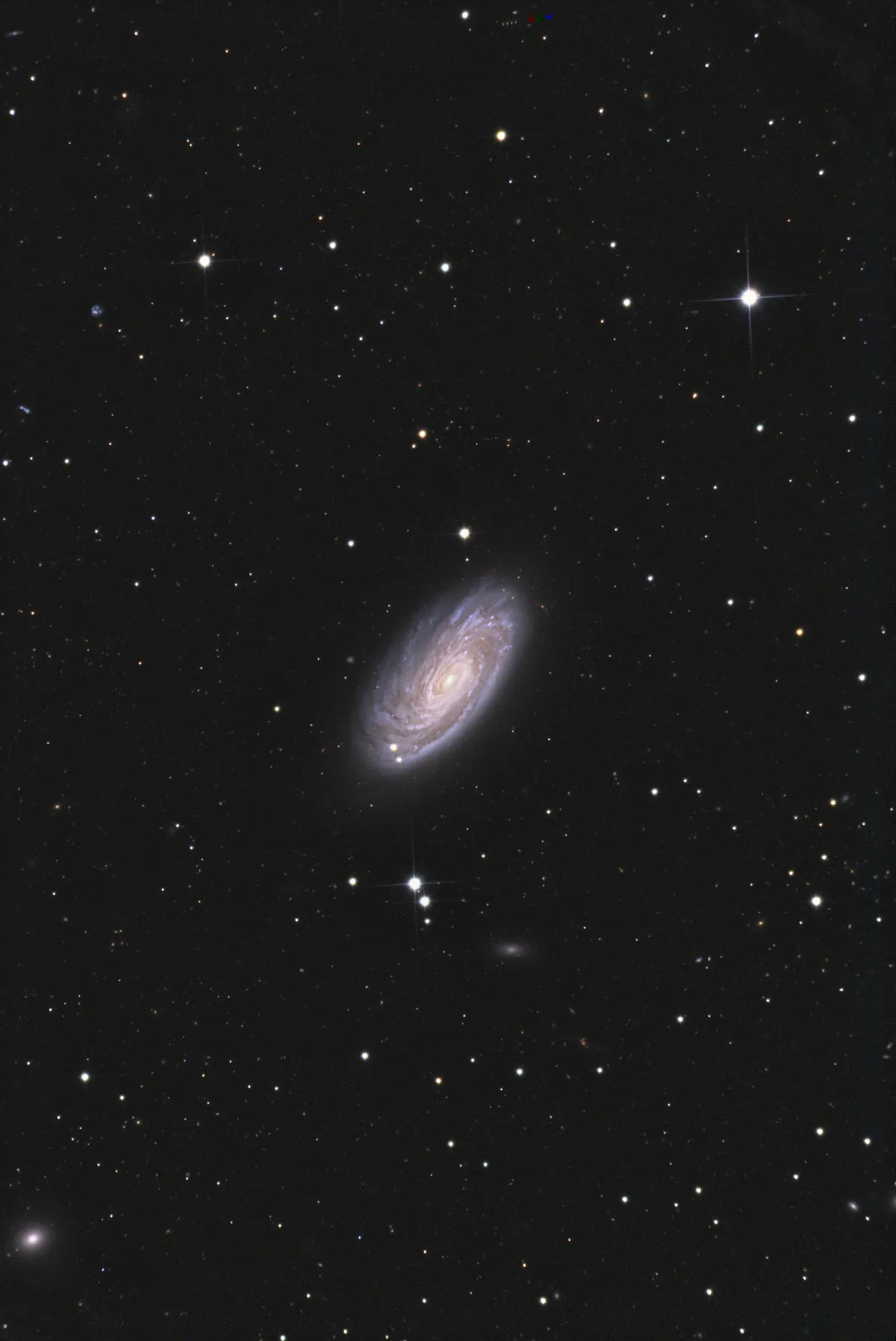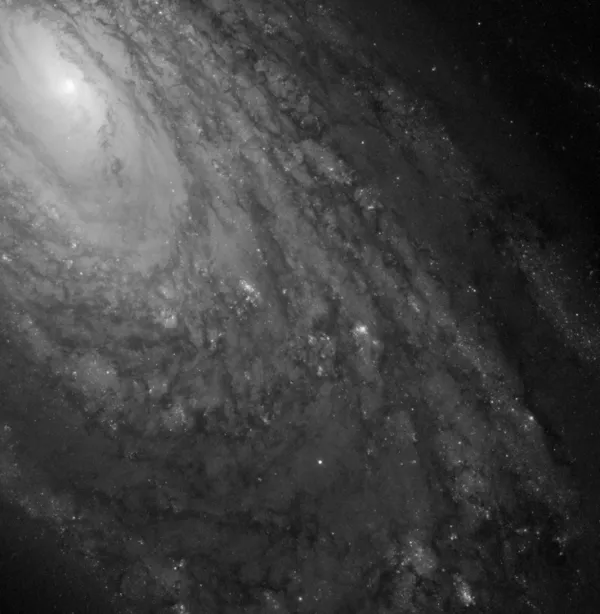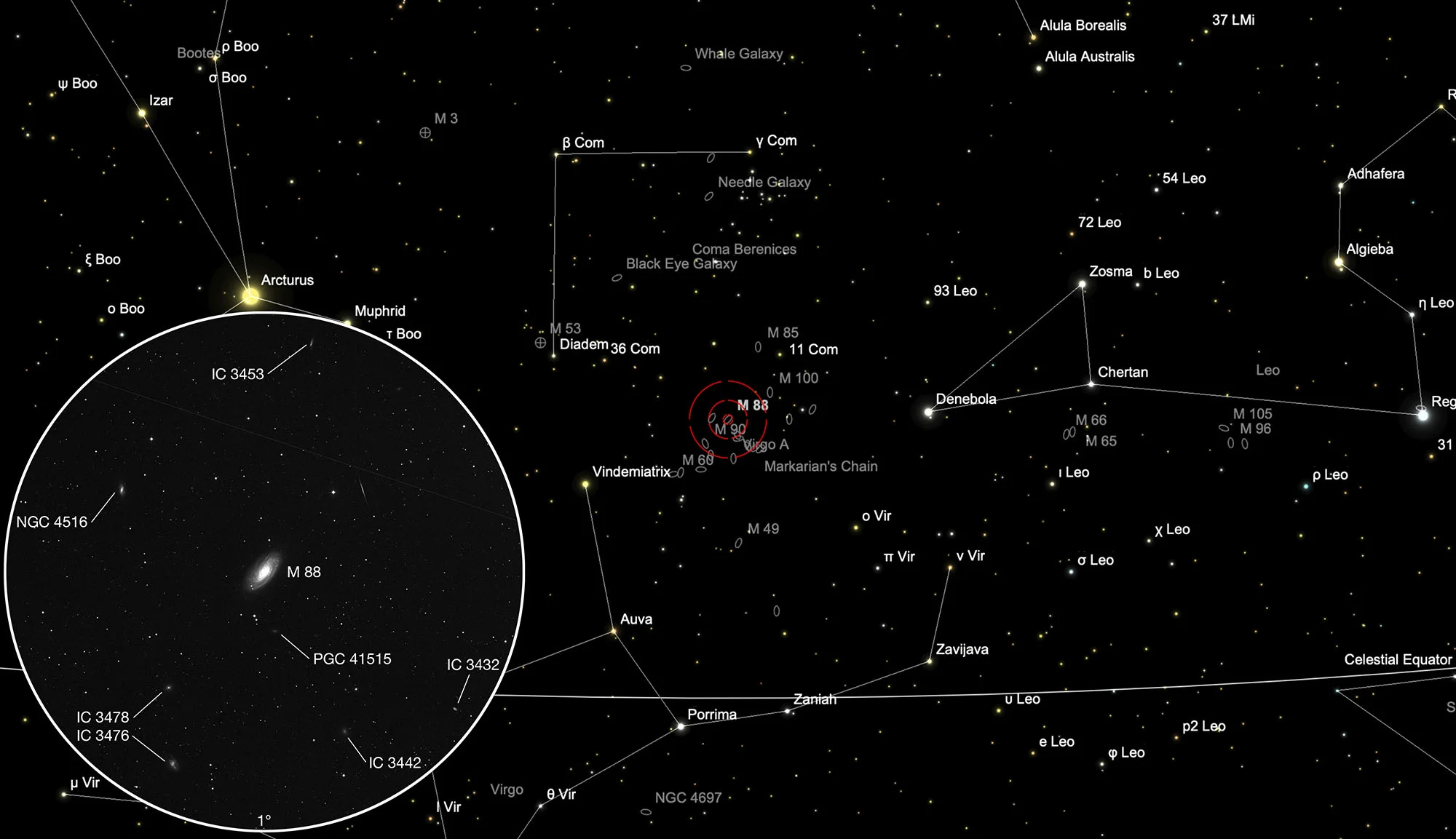Galaxy Messier 88

History
The galaxy M 88 was discovered by Charles Messier on 18 March 1787. He wrote: «Nebula without a star, in Virgo, between two small stars and a star of the sixth magnitude, which appear simultaneously in the field of view of the telescope. The brightness is one of the weaker and is like no. 58 in Virgo.» [281]
Physical Properties

M 88 is a spiral galaxy with well-defined and symmetrical spiral arms. It is about 47 million light years away and one of the fifteen Messier galaxies in the Virgo Cluster. It is a Seyfert galaxy and has an active core, which means that the central area of the galaxy is brighter than the rest of the galaxy. In the centre there is a supermassive black hole with about 100 million solar masses. M 88 contains about 400 billion stars and is moving away from our galaxy. [215]
| Designation | NGC 4501 |
| Type | Gx (Sb) |
| Right Ascension (J2000.0) | 12h 31m 59.0s |
| Declination (J2000.0) | +14° 25' 11" |
| Diameter | 6.8 × 3.7 arcmin |
| Photographic (blue) magnitude | 10.4 mag |
| Visual magnitude | 9.6 mag |
| Surface brightness | 13.0 mag·arcmin-2 |
| Position Angle | 140° |
| Redshift (z) | 0.007609 |
| Distance derived from z | 32.14 Mpc |
| Metric Distance | 19.130 Mpc |
| Dreyer Description | B, vL, vmE |
| Identification, Remarks | h 1312; GC 3049; M 88; UGC 7675; MCG 3-32-59; CGCG 99-76; VCC 1401 |
Other Galaxies in that Area
| PGC | RA | Dec | Type | Dim | Btot | HRV | PA | Names |
|---|---|---|---|---|---|---|---|---|
| PGC 41320 | 12 30 27.4 | +14 09 32 | S | .6 x .4 | 15.0 | 6019 | IC 3432, MCG 2-32-102, CGCG 70-135, VCC 1293, KUG 1227+144 | |
| PGC 41435 | 12 31 20.2 | +14 06 54 | E | .9 x .8 | 14.6 | 6210 | IC 3442, MCG 2-32-111, CGCG 70-144, VCC 1355 | |
| PGC 41468 | 12 31 38.6 | +27 29 46 | S | 1.2 x .2 | 15.7 | 7009 | 26 | IC 3454, UGC 7670, MCG 5-30-13, CGCG 159-10 |
| PGC 41515 | 12 31 59.0 | +14 18 27 | E | .8 x .4 | 16.2 | VCC 1400 | ||
| PGC 41608 | 12 32 42.2 | +14 03 03 | IB | 2.2 x 1.9 | 13.1 | -171 | 30 | IC 3476, UGC 7695, MCG 2-32-125, CGCG 70-157, VV 563, VCC 1450 |
| PGC 41614 | 12 32 44.4 | +14 11 47 | LB | 1.1 x 1.0 | 14.4 | 1876 | IC 3478, UGC 7696, MCG 2-32-126, CGCG 70-158, VCC 1453 | |
| PGC 41661 | 12 33 07.7 | +14 34 32 | SB | 1.8 x .9 | 13.3 | 958 | 0 | NGC 4516, UGC 7703, MCG 3-32-67, CGCG 99-87, VCC 1479 |
Finder Chart
M 88 is located in the constellation Coma Berenices. The best observation time is December to September.
